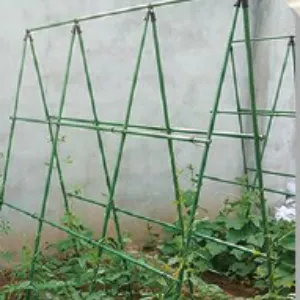-
Email:zhao@hyliec.cn
-
Tel:+86 311 85273988
-
WhatsAPP:8613931128750
-
 Afrikaans
Afrikaans -
 Albanian
Albanian -
 Amharic
Amharic -
 Arabic
Arabic -
 Armenian
Armenian -
 Azerbaijani
Azerbaijani -
 Basque
Basque -
 Belarusian
Belarusian -
 Bengali
Bengali -
 Bosnian
Bosnian -
 Bulgarian
Bulgarian -
 Catalan
Catalan -
 Cebuano
Cebuano -
 Corsican
Corsican -
 Croatian
Croatian -
 Czech
Czech -
 Danish
Danish -
 Dutch
Dutch -
 English
English -
 Esperanto
Esperanto -
 Estonian
Estonian -
 Finnish
Finnish -
 French
French -
 Frisian
Frisian -
 Galician
Galician -
 Georgian
Georgian -
 German
German -
 Greek
Greek -
 Gujarati
Gujarati -
 Haitian Creole
Haitian Creole -
 hausa
hausa -
 hawaiian
hawaiian -
 Hebrew
Hebrew -
 Hindi
Hindi -
 Miao
Miao -
 Hungarian
Hungarian -
 Icelandic
Icelandic -
 igbo
igbo -
 Indonesian
Indonesian -
 irish
irish -
 Italian
Italian -
 Japanese
Japanese -
 Javanese
Javanese -
 Kannada
Kannada -
 kazakh
kazakh -
 Khmer
Khmer -
 Rwandese
Rwandese -
 Korean
Korean -
 Kurdish
Kurdish -
 Kyrgyz
Kyrgyz -
 Lao
Lao -
 Latin
Latin -
 Latvian
Latvian -
 Lithuanian
Lithuanian -
 Luxembourgish
Luxembourgish -
 Macedonian
Macedonian -
 Malgashi
Malgashi -
 Malay
Malay -
 Malayalam
Malayalam -
 Maltese
Maltese -
 Maori
Maori -
 Marathi
Marathi -
 Mongolian
Mongolian -
 Myanmar
Myanmar -
 Nepali
Nepali -
 Norwegian
Norwegian -
 Norwegian
Norwegian -
 Occitan
Occitan -
 Pashto
Pashto -
 Persian
Persian -
 Polish
Polish -
 Portuguese
Portuguese -
 Punjabi
Punjabi -
 Romanian
Romanian -
 Russian
Russian -
 Samoan
Samoan -
 Scottish Gaelic
Scottish Gaelic -
 Serbian
Serbian -
 Sesotho
Sesotho -
 Shona
Shona -
 Sindhi
Sindhi -
 Sinhala
Sinhala -
 Slovak
Slovak -
 Slovenian
Slovenian -
 Somali
Somali -
 Spanish
Spanish -
 Sundanese
Sundanese -
 Swahili
Swahili -
 Swedish
Swedish -
 Tagalog
Tagalog -
 Tajik
Tajik -
 Tamil
Tamil -
 Tatar
Tatar -
 Telugu
Telugu -
 Thai
Thai -
 Turkish
Turkish -
 Turkmen
Turkmen -
 Ukrainian
Ukrainian -
 Urdu
Urdu -
 Uighur
Uighur -
 Uzbek
Uzbek -
 Vietnamese
Vietnamese -
 Welsh
Welsh -
 Bantu
Bantu -
 Yiddish
Yiddish -
 Yoruba
Yoruba -
 Zulu
Zulu
garden plant supports
Garden Plant Supports Elevating Your Garden to New Heights
In the world of gardening, aesthetics and functionality often go hand in hand. One of the key components that can enhance both the beauty and the health of your plants is the use of garden plant supports. These structures not only provide the much-needed stability for climbing plants but also add an artistic touch to your garden landscape.
The Importance of Garden Plant Supports
Garden plant supports serve a vital role in the growth and development of various plants. Many plants, especially climbing varieties like tomatoes, peas, and beans, require assistance to reach their full potential. Without adequate support, these plants may become weak, leggy, or worse, break under their own weight. By providing a structured support system, gardeners can ensure that their plants grow upwards rather than sprawling on the ground, which can lead to disease and pest infestations.
Types of Plant Supports
There are numerous types of garden plant supports available, each designed for specific plant types and growth habits
. Here are some popular options1. Trellises These are often used for climbing plants and can be made from wood, metal, or plastic. Trellises can be decorative, providing a vertical element to the garden while supporting plants like cucumbers, grapes, and climbing roses.
2. Cages Plant cages, commonly used for growing tomatoes, offer an enclosed structure for plants to grow through. They provide stability and help keep fruit off the ground, preventing rot and making harvesting easier.
garden plant supports

3. Stakes Stakes are simple and versatile supports made from wood or metal. They are often used for individual plants, such as sunflowers or sweet peas, and can easily be inserted into the soil beside the plant.
4. Arbors and Pergolas For a larger-scale gardening project, arbors and pergolas not only support vines but also create inviting pathways and shaded areas in the garden. Climbing plants like wisteria or honeysuckle can transform these structures into beautiful focal points.
5. Strings and Twine For a more DIY approach, gardeners can use strings or twine strung between stakes to create a simple yet effective support system for smaller climbers and sprawling plants.
Benefits Beyond Support
In addition to providing stability, garden plant supports can enhance the overall health of plants. By encouraging upward growth, these structures allow for better air circulation around the foliage, reducing the risk of fungal diseases. Additionally, supported plants are typically easier to tend to, making tasks such as watering and harvesting less cumbersome.
Conclusion
Integrating garden plant supports into your gardening routine not only promotes healthier plant growth but also adds a touch of sophistication to your space. Whether you opt for a traditional trellis, a simple stake, or an elaborate arbor, these supports can elevate your garden, quite literally, to new heights. As you design and cultivate your green sanctuary, consider the various plant support options available to enhance both the beauty and functionality of your garden. Happy gardening!
-
Garden Fence on a Roll: Versatile Solutions for Outdoor Enclosure and Decoration
NewsAug.22,2025
-
Fence Post Varieties: Essential Components for Durable Enclosures
NewsAug.22,2025
-
Garden Fence Panels: Blending Functionality and Aesthetic Appeal
NewsAug.22,2025
-
Tools for Fence: Essential Equipment for Garden Fence Installation and Maintenance
NewsAug.22,2025
-
Fence and Gate Accessories: Enhancing Functionality and Durability
NewsAug.22,2025
-
Metal Plant Supports: Essential Structures for Healthy Plant Growth
NewsAug.22,2025
